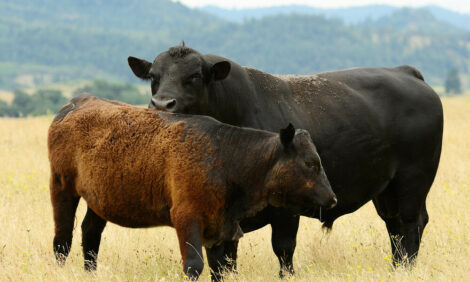



Mixed Start To 2012 Livestock Markets
AUSTRALIA - The first full selling week of 2012 was somewhat of a mixed bag for prices, particularly when compared to the end of 2011.While young cattle prices remained near all-time highs, prices for export categories averaged lower than the final full selling week of December (17 December). All lamb categories started the year lower, reports Meat and Livestock Australia.
However, it must be stated that the first full week of trading can often by marked by an absence of buyers, while producers can be keen to market stock after the lack of selling opportunities over the Christmas and New Year break. For 2012, both appear to be applicable, with cattle yardings up 22 per cent on the corresponding week last year, and lamb offerings jumping 15 per cent. While much of the year-on-year national increase in cattle numbers for the past week was in Queensland, it must also be remembered that yardings during the first full selling week of 2010 were extremely low, as flooding saw most sales cancelled.
After hitting an all-time high of 428¢/kg cwt in the final few selling days of 2011, the EYCI opened 2012 on Monday at 419.25¢/kg cwt – slipping to 412.75¢/kg cwt by Friday. Demand for young cattle remains very strong, with the results from the opening weaner sales of the year well received by most sellers.
Heavy steers averaged 349¢/kg cwt for the week, cheaper than the end of 2011, and equal with the corresponding week in 2010. Nationally cows averaged 307¢/kg cwt for the week, with direct to works prices at 295¢/kg cwt.
Lamb prices started 2012 cheaper, with prices back across all categories, albeit just barely for restocker and feeder lambs. Higher lamb offerings in NSW, Victoria and SA reportedly contributed to the lower start to the year, with the hot weather throughout early January possibly inducing increased turnoff. Nationally, trade lambs finished the week at 494¢/kg cwt, while heavy and light lambs averaged 477¢/kg cwt and 499¢/kg cwt, respectively.
Less impacted by the summer break, the national average for restocker and feeder lamb prices only started the year down 1¢ on the finish of 2011, averaging 542¢/kg cwt. Producers are reported to be chasing additional lambs for finishing, keen to make the most of an abundant supply of feed grain and pasture.
As market activity increases in coming weeks, a clearer state of play for both cattle and lamb markets should become evident.
TheCattleSite News Desk


